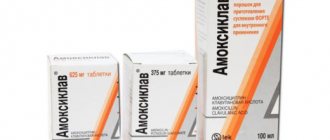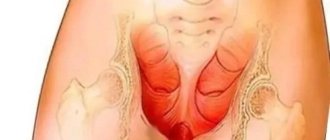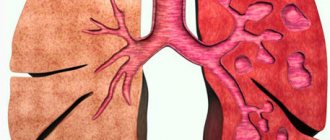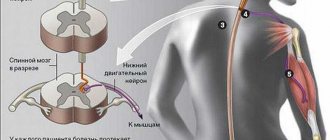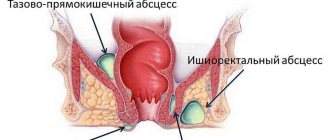Up to 40% of women after menopause experience symptoms of atrophic colpitis (itching and burning, vaginal dryness and pain during intimacy). It is typical that the longer the period of menopause, the higher the risk of this disease. Thus, the percentage of patients with this disease increases to 75 approximately 10 years after the date of the last menstruation.
Since atrophic changes in the vaginal epithelium are usually associated with the physiological completion of hormone production by the ovaries, atrophic colpitis is considered as a pathology only if pronounced clinical signs occur (the appearance of significant discomfort).
Symptoms of vaginal atrophy
The content of the article
Moderate to severe genitourinary syndrome of menopause includes the following signs and symptoms:
- vaginal dryness;
- vaginal burning;
- vaginal discharge;
- genital itching;
- burning when urinating;
- urinary tract infections;
- urinary incontinence;
- light bleeding after intercourse;
- discomfort during sexual intercourse;
- decreased amount of vaginal lubrication during sexual intercourse;
- shortening and tightening of the vaginal canal.
Clinical picture
The first signs of atrophic vaginitis appear approximately 5 years after the onset of the last menstruation. As a rule, the disease is sluggish, the symptoms are mild. An increase in clinical manifestations is associated with the addition of a secondary infection and the activation of opportunistic bacteria, which is facilitated by microtrauma of the mucous membrane due to its slight vulnerability (for example, after a gynecological examination, coitus or washing/douching). The main features include:
Vaginal discomfort
It manifests itself as a feeling of dryness, tightness of the vagina, and in some cases pain. When pathogenic microflora attaches, significant itching and burning appear.
Dyspareunia
Pain during and after sexual intercourse is caused by depletion of the stratified squamous vaginal epithelium, exposure of nerve endings and decreased secretion production by the vaginal glands, the so-called lubrication.
Vaginal discharge
With this disease, vaginal discharge is moderate in nature, mucous or closer to watery. In case of infection, leucorrhoea acquires qualities characteristic of a certain type of bacteria (curdled, greenish, foamy) and has an unpleasant odor. Also, atrophic vaginitis is characterized by bloody discharge. As a rule, they are insignificant, in the form of a few drops of blood, and are caused by trauma to the mucous membrane (sexual contact, medical examination, douching). The appearance of any bleeding (both minor and heavy) in postmenopause is a reason to immediately consult a doctor.
Frequent urination
Senile vaginitis is always accompanied by thinning of the bladder wall and weakening of the tone of the pelvic floor muscles. These processes are accompanied by increased urination, although the amount of urine excreted per day does not change (does not increase). In addition, weakened pelvic floor muscles contribute to the development of urinary incontinence (when coughing, laughing, sneezing).
Examination data in gynecological speculum
The vaginal mucosa is pale pink, with numerous pinpoint hemorrhages. When in contact with medical instruments, the mucous membrane bleeds easily. If a secondary infection occurs, swelling and redness of the vagina, grayish or purulent discharge are observed.
When to see a doctor
By some estimates, almost half of postmenopausal women experience genitourinary menopausal syndrome, although few seek treatment. Women resign themselves to symptoms or are embarrassed to discuss them with a gynecologist. But in vain! This pathology can be eliminated without surgery.
Make an appointment with a professional if you experience painful symptoms during sexual intercourse that do not improve with a vaginal moisturizer or water-based lubricant. You may also need to see a gynecologist if there are vaginal symptoms such as unusual bleeding, discharge, burning or tenderness.
Risk group: people susceptible to the disease
Vaginal atrophy most often occurs in several groups of women:
- those in a postmenopausal state;
- those suffering from diabetes;
- diagnosed with hypothyroidism (thyroid dysfunction);
- have undergone radiotherapy of the pelvic organs;
- removed ovaries;
- are carriers of the human immunodeficiency virus.
Thus, the disease affects women with metabolic disorders. Doctors associate the high incidence rate with increasing life expectancy and the aging of the planet's population. Statistics claim that almost a third of the female population is susceptible to atrophy of the vaginal mucosa, since half of the life of the fairer sex is spent in conditions of hormonal imbalance.
At an early stage, the disease proceeds unnoticed, and not all women go to the gynecological office for treatment.
Causes of atrophic vaginitis
Genitourinary syndrome of menopause is caused by a decrease in estrogen production. Decreased estrogen makes vaginal tissue thinner, drier, less elastic, and more fragile.
A decline in estrogen levels occurs:
- after menopause;
- during the several years preceding menopause (perimenopause);
- after surgical removal of both ovaries (surgical menopause);
- after pelvic radiation therapy for cancer;
- after chemotherapy for cancer;
- as a side effect of hormonal treatment for breast cancer.
Signs and symptoms of genitourinary menopause syndrome may become a concern in the years leading up to menopause, or may not become a problem until menopause occurs.
Although it is a common condition, not all menopausal women experience genitourinary menopause syndrome. Some people find it helpful to maintain healthy vaginal tissue by having regular sex with a partner.
Dynamics of pH values
Analysis of pH (Fig. 2) during therapy showed a statistically significant decrease in pH in group I after 20 and 90 days, both compared to the initial level and compared to this indicator in patients of group III. In group II (intimate hygiene cream "Antik" dosed), the decrease in pH showed significant differences when compared with the same indicator in patients of group III after 20 and 90 days (p <0.05), however, the decrease in pH relative to the initial level was less pronounced ( p>0.05). There were no significant differences in the dynamics of pH decrease between groups I and II (p>0.05).
Risk factors
Certain factors may contribute to the occurrence of genitourinary menopause syndrome. This circle includes:
- Smoking
. Smoking cigarettes affects blood circulation, causing the vagina and other tissues to not receive enough oxygen. Smoking also reduces the exposure to natural estrogens in the body. In addition, women who smoke tend to experience earlier menopause. - No vaginal birth.
Researchers note that women who have never given birth vaginally are more likely to develop genitourinary menopause syndrome than women who have had a vaginal birth. - Lack of sexual activity.
Sexual activity with a partner increases blood flow and makes vaginal tissue more elastic.
Why does atrophy of the vaginal mucosa occur?
The main cause of the disease is a decrease in estrogen production. These are female sex hormones responsible for the normal functioning of the organs of the reproductive system.
Their decrease can be caused by the following changes:
- deviation in the activity of the thyroid gland. It is involved in the production of vital hormones. If its functioning is disrupted, subsequent disruption of the activity of all organs is possible, including the ovaries, where most of the estrogen is produced;
- diabetes. The disease is accompanied by metabolic disorders in the body and hormonal disorders;
- depletion of immunity (chronic pathologies, after severe illnesses);
- chronic diseases in the reproductive organs;
- lack of vitamins and minerals from food (diet or poor diet);
- premenopause and menopause. The conditions are accompanied by a decrease in estrogen production;
- breastfeeding a child. During this period, hormonal changes also occur with reduced estrogen production;
- caesarean section and absence of childbirth;
- radiation or chemotherapy. These treatment methods destroy not only cancer cells, but also beneficial microflora, which leads to hormonal imbalance;
- ovarian pathology in severe form. Diseases can provoke a decrease in estrogen production;
- surgical removal of the ovaries (for inoperable abnormalities in the organ). In this case, the production of hormones in the body is significantly reduced;
- hormone therapy. Treatment is aimed at correcting hormonal balance or completely eliminating hormones;
- poisoning with chemicals, heavy metals, aggressive medications;
- presence of HIV;
- frequent and prolonged stress conditions and nervous strains;
- the presence of bad habits (smoking, alcohol abuse) also affects a woman’s hormonal levels and can cause atrophy of the vaginal mucosa.
The diagram shows what mucosal atrophy looks like in gynecology.
Additionally, provoking factors for the development of pathology can be:
- poor sexual hygiene;
- frequent washing with the use of aggressive intimate hygiene products;
- wearing synthetic and tight underwear.
Excess weight and lack of physical activity can be both provoking factors and the cause of hormonal imbalance with subsequent development of the disease.
Diagnostics
Diagnosis of atrophic vaginitis may include:
- Palpation of the pelvic organs.
The gynecologist palpates and visually examines the external genitalia, vagina and cervix. During the examination, the doctor also checks for signs of pelvic organ prolapse, as evidenced by bulges in the vaginal walls from the pelvic organs: bladder, rectum, or stretching of the supporting tissues of the uterus. - Urinalysis
, which involves collecting and testing urine if symptoms of urinary problems are present. - Acid balance test
. Involves taking a sample of vaginal fluid or placing a paper test strip in the vagina to check its acid balance. - Estrogen analysis
. The gynecologist must see what the level of hormones is in the body and only then prescribe treatment.
An excursion into the physiology and pathogenesis of the disease
The vagina is lined with stratified squamous epithelium, which performs a large number of functions necessary to protect the genital organs from infectious pathogens. Due to its multi-layered nature, the vaginal epithelium is constantly renewed, the upper cells die and slough off, taking with them pathogenic microorganisms and their toxins, and new ones “come” in their place.
In addition, the vaginal epithelium maintains a constant environment. Normally, in women of childbearing age, the environment in the vagina is always acidic (pH 3.8 - 4.5), and the microflora is 98% represented by lactic acid bacteria (lactobacteria). Lactobacilli prevent the penetration of pathogenic pathogens and the activation of opportunistic microbes due to the maintenance of constant vaginal acidity. Lactic acid bacteria feed on glycogen, which is found in large quantities in desquamated epithelial cells.
With the onset of menopause, the cyclic renewal of the vaginal epithelium stops, which is associated with a decrease in estrogen synthesis and the end of menstrual function. Epithelial cells are exfoliated in small quantities, which leads to glycogen deficiency and, accordingly, to a decrease in the number of lactobacilli. In connection with these processes, the pH of the vagina shifts to the alkaline side, which leads to its contamination with opportunistic microorganisms and the penetration of pathogenic pathogens. All of the above causes a local inflammatory reaction of the mucous membrane, that is, colpitis.
Thinning of the epithelium and a decrease in the production of secretions by the vaginal glands lead to fragility and slight vulnerability of the vaginal mucosa, which further contributes to the activation of opportunistic flora, and also leads to a narrowing of the vaginal lumen.
Treatment
To treat genitourinary menopause syndrome with mild symptoms, the gynecologist may first make recommendations:
- Try a vaginal humidifier
to restore moisture to the vaginal area. You may need to apply moisturizer every two to three days. A moisturizer usually lasts a little longer than a lubricant. - Use a water-based lubricant
to reduce discomfort during sexual intercourse. Choose products that do not contain glycerin, because women who are sensitive to this chemical may experience burning and irritation. Avoid Vaseline or other petroleum-based products for lubrication if you also use condoms. Oil can ruin latex condoms on contact.
Troubling symptoms that do not improve with over-the-counter treatment are treated with the following methods:
- Topical (vaginal) estrogens
. Vaginal estrogen has the advantage that it is effective in lower doses and limits overall estrogen exposure because less enters the bloodstream. It may provide better direct symptom relief than oral estrogen. - Oral estrogen.
Estrogen taken orally penetrates the entire body. It is important to ask your gynecologist to explain the risks and benefits of oral estrogen.
Prevention
Prevention of vaginitis comes down to the following measures:
- Using a condom during intimacy. This helps prevent sexually transmitted infections. After unprotected sex, you can use Miramistin.
- High-quality intimate hygiene using gentle products for the care of the genitals. Pads should be changed every 4 hours during menstruation.
- Ovarian diseases and menopause require taking hormonal medications.
Vaginitis is dangerous for pregnant women, as it can cause infection of the fetus. Therefore, the disease must be treated correctly and on time.
Topical estrogens
Vaginal estrogen therapy comes in several forms. Since they all work equally well, your doctor can decide which one is best.
- Vaginal estrogen cream
. Inserted directly into the vagina using an applicator, usually before bed. The gynecologist, having received the test results, tells you how much cream to use and how often to apply it. Typically, women use it daily for one to three weeks, and then one to three times a week. While creams may offer faster relief than other forms of vaginal estrogen, they may contain extra unwanted elements. - Vaginal estrogen ring.
Your doctor inserts a soft, flexible ring into the upper part of your vagina. The ring releases a constant dose of estrogen in place and requires replacement every three months. Many women love the convenience this offers. Another ring with a higher dose is considered a systemic rather than a topical treatment. - Vaginal estrogen tablets
. A disposable applicator is used to place the vaginal estrogen tablet into the vagina. The gynecologist will tell you how often you need to insert the applicator. For example, you can use it daily for the first two weeks and then twice a week.
Folk remedies for restoring the vaginal mucosa
In gynecology, complex treatment is allowed with the simultaneous use of folk remedies and medications to eliminate atrophy of the vaginal mucosa.
Recipes for folk compositions with rules of preparation and use:
| Procedure name | Components | Cooking features | Application nuances |
| Baths with chamomile infusion | Dried chamomile 15 g and 400 ml boiling water. | Steam the herb in boiling water and let it brew, covered, for 30 minutes. Strain. | Add the infusion to the basin/bath and take the sedentary procedure for 30 minutes. Duration of therapy is 14-30 days. The solution can be used for douching. |
| Baths with the addition of coltsfoot | Dried coltsfoot 100 g and 1 liter of boiling water. | Combine the ingredients and leave for 1 hour. Strain. | |
| Tampons with sea buckthorn oil | Tampon, sea buckthorn oil. | Soak the swab in oil. | Insert a tampon into the vagina for a period of night rest for 45 days. |
| Mud tampons and applications | Mud tampons and mud applications. Sold in a pharmacy. | The products must be warm. | Insert the tampon into the vagina for 30 minutes. At the same time, a mud application is made on the back. After completing the procedure, the vagina must be rinsed with mineral water. |
| Aloe infused tampon | Freshly squeezed aloe juice, tampon. | Soak a tampon in juice. | Soak a tampon with the composition and use it at night (insert into the vagina) for 14 days. |
| Herbal preparations for douching | Calendula, chamomile and St. John's wort 5 g each | Mix herbs and steam 1 liter of boiling water. Leave for 12 hours. Strain. | Douche 2 times a day for 10 days. Repeat procedures are allowed after 90 days. |
| Grind the dried root of Rhodiola rosea. You will need 10 g and 300 ml of boiling water. | Combine ingredients and cook for 12 minutes. After 2 hours, strain and add 500 ml of water (warm, boiled) to the broth. | Procedures should be performed in the evening for 14 days. | |
| Combine dried chamomile and plantain in equal proportions. To prepare the solution you will need 15 g of the mixture. Boiling water 500 ml. | Combine the ingredients and let it brew for 2 hours. | ||
| Willow remedies | Dried willow leaves (50 g) and 3 liters of water. | Combine ingredients and cook for 20 minutes. Strain. | Use the decoction to prepare sitz baths. Duration of the procedure is 20 minutes. Course up to 30 days. |
| Mix willow leaves and chamomile flowers in equal proportions. You will need 5 g of the mixture. Boiling water 200 ml. | Steam the mixture of herbs with boiling water. Leave for 15 minutes. Strain. | Use instead of tea in the evening for 30 to 90 days. | |
| Compositions with added raspberries | Dried raspberry leaves 5 g and 200 ml boiling water. | Steam raspberries in boiling water and let steep for 10 minutes. Strain. | |
| Herbal teas for drinking | Mix 100 g each of sage, adonis and rosemary. | Steam 10 g of the mixture in 400 ml of boiling water. Infuse in a thermos. | Drink the drink throughout the day for 30 days. |
The herbs used in the recipes have anti-inflammatory, disinfecting and healing effects. It is important that the simultaneous use of folk and medicinal formulations orally (tablets and infusions) or vaginally (suppositories and decoctions for douching) is prohibited.
Systemic estrogen therapy
If vaginal dryness is associated with other menopausal symptoms, such as moderate to severe hot flashes, your gynecologist may suggest estrogen tablets, patches or gel, or a higher dose estrogen ring.
Along with estrogen, if the uterus is not removed (hysterectomy), progestin is prescribed. Oral progesterone, which is chemically identical to the hormone the body produces (bioidentical), is often preferred. Combinations with estrogen-progestin patches also work well.
If there is no uterus, estrogen alone can be used. Talk to your gynecologist to decide whether hormonal treatment is appropriate, taking into account any medical problems and family medical history.
general information
Vaginitis is an inflammation of the vagina that can lead to discharge, itching and pain. The cause is usually a change in the normal balance of vaginal bacteria or an infection. A decrease in estrogen levels after menopause can cause atrophic vaginitis and some skin disorders.
To better understand the essence of the problem, let’s define the medical terminology for this disease. In publications you can find different names for diseases of the lower reproductive tract that are similar in their causes and symptoms, which often leads to confusion. So…
message
Vaginitis is an inflammatory process of the vaginal mucosa. Locally, this area is located in the area starting behind the hymen and ending at the cervix.
message
Vulvitis is an inflammation of the external genital organs, their mucous membrane (labia, vestibule of the vagina, skin of the clitoris or hymen, and this also includes the external opening of the urethra). In 30% of cases in adolescence, the cause of vulvitis is Candida fungi (thrush), and in 15% the cause is a bacterial infection (the so-called gardnerellosis).
message
Vulvovaginitis is a gynecological pathology in women, combining the causes and symptoms of vulvitis and vaginitis (specific or nonspecific).
Main types of vaginitis:
- Bacterial vaginosis, which is the result of a change from the normal bacteria found in your vagina to an overgrowth of other organisms;
- Acute yeast vaginitis, which are usually caused by a naturally occurring fungus called Candida albicans;
- Trichomonas vaginitis, which is caused by a parasite from a genus of protozoan microorganisms.
Treatment for vaginitis depends on the type of disease that your gynecologist diagnosed during the examination.
Symptoms of vaginitis
Signs and symptoms of vaginitis may include:
- Change in color, odor, or amount of vaginal discharge;
- Vaginal itching or irritation;
- Pain during intercourse;
- Painful urination;
- Vaginal bleeding or spotting.
Acute vaginitis
If you have an unusual vaginal discharge that you haven't had before, its characteristics may indicate that you may have a sexually transmitted infection. Examples:
✔ Gardnerellosis . You may develop a greyish-white, foul-smelling discharge. The odor, often described as fishy, may be more obvious after regular vaginal intercourse. This most common cause of vaginitis is the result of a change in the amount of normal bacteria found in your vagina. Typically, these beneficial bacteria commonly found in the vagina (lactobacillus) outnumber other bacteria (anaerobes). If anaerobic bacteria become too numerous, they upset the balance, causing bacterial vaginosis.
This type of inflammation in the vagina is often associated with sexual intercourse, especially if you have multiple sexual partners or a new sexual partner, but it is also common or has happened to a woman who has had symptoms of acute vaginitis.
✔ Yeast infection. The main symptom is redness and itching, but you may have a white, thick discharge that resembles cottage cheese. They occur when there is an overgrowth of a fungal organism, usually C. albicans, in your vagina. Candida albicans also causes fungal infections in other moist areas of your body, such as the mouth (thrush), skin folds, and nail beds.
✔ Trichomonosis. Acute vaginitis in women, caused by the microbe Trichomonas, can produce a greenish-yellow, sometimes foamy discharge. This common genitourinary infection, transmitted through intimate intimacy of any kind, is caused by the microscopic single-celled parasite Trichomonas vaginalis. This organism is spread during sexual intercourse with a partner who has clinical signs or is a latent carrier. Acute vaginitis in girls and adolescents can be caused by this pathogen, acquired through household contact.
In men, the body usually affects the urinary tract, but often it does not cause any symptoms. In women, trichomoniasis usually affects the vagina and can cause symptoms. It also increases the risk of women contracting other sexually transmitted infections.
Nonspecific vaginitis
Vaginal sprays, scented soaps, scented cleansers, and spermicides may cause an allergic reaction or irritate the tissues of the vulva and vagina. Long-term inflammatory manifestations lead to chronic forms of nonspecific vaginitis. Foreign objects, such as a tissue or tampons left in the vagina, can also irritate the vaginal tissues, causing itching and an unpleasant odor from the intimate area.
In other words, nonspecific vaginitis in gynecology is a disease of an infectious-inflammatory nature that occurs against the background of a predominance of opportunistic flora formed in the vagina, mainly in adults, in women during pregnancy and in little girls. The emphasis is placed precisely on the absence of any specific, “specific” STI pathogen such as gonococcus, Trichomonas, etc.
A long course of taking antibiotics with broad antimicrobial action or self-medication with them at home leads to dysbiosis with the death of lactobacilli and a change in the pH of the vaginal environment from acidic to alkaline. These conditions are most favorable for the reproduction and growth of opportunistic microflora.
Atrophic vaginitis
Synonyms are “urinary menopause syndrome”, senile vaginitis and vaginal atrophy. A decrease in estrogen levels inevitably occurs during menopause and after menopause or surgical removal of the ovaries. This leads to a gradual thinning of the vaginal mucosa, sometimes leading to irritation, burning and dryness in the postmenopausal period.
Vaginitis in older women is associated with an atrophic nature and is predominantly nonspecific in nature and develops against the background of primary vaginal dysbiosis. This occurs as a result of a decrease in the production of lubrication by the vaginal glands, which directly depends on the level of estrogen. Such an environment is favorable for the proliferation of microorganisms of the opportunistic group, which are normally present in small quantities on the genitals.
Symptoms of atrophic vaginitis:
- burning with itching outside inside the genitals,
- itching when urinating, after washing with soap,
- discomfort during sexual intercourse,
- after sex there is “spotting” spotting on your underwear,
- feeling that the vagina is “all dry”
- the discharge has an unpleasant odor and contains patches of reddish or brown color,
- decreased desire to have
- During exercise, involuntary urination sometimes occurs.
Are there any symptoms of atrophic vaginitis?
Find out about useful beauty and health procedures for women 45+ and postmenopausal! Hyaluronic injections are the No. 1 remedy in the prevention and treatment of atrophic vaginitis.
help_outline
What is intimate rejuvenation
Causes of vaginitis
Factors that increase the risk of developing any type of vaginitis in women, regardless of their age, include:
- Hormonal changes associated with pregnancy, birth control pills
- Reduced ovarian function (chronic adnexitis, genital infantilism, fasting, menopause and menopause)
- Sexual activity
- Presence of a sexually transmitted infection
- Medicines such as antibiotics and steroids
- Use of spermicides for fertility regulation
- Uncontrolled diabetes mellitus
- Excessive hygiene products (bubble bath, vaginal spray or vaginal deodorant)
- Douching without a doctor's prescription
- Constant, prolonged wearing of wet, synthetic or tight-fitting clothing
- Using an intrauterine device (IUD)
Diagnosis of vaginitis
Smear tests, PCR, cultures and other services to clarify your health status.
Delivery daily. Check out the link below for all the information you need. from 350 ₽
assignment_ind
Where to get tested
Prevention Tips
Good intimate hygiene can prevent some types of vaginitis and relieve symptoms before visiting your gynecologist:
- Ignore baths, hydromassage water treatments with underwater massage.
- Avoid irritants. These include scented tampons, pads, douches and scented soaps. After showering, rinse the soap from the external genital area and dry the area thoroughly to prevent irritation. Do not use harsh soaps that are antibacterial.
- Avoid spreading fecal bacteria into the vagina.
- Your vagina does not require any cleansing other than regular bathing. Repeated douching disrupts the beneficial bacteria found in the vagina and increases the risk of vaginal infection. Douching will not get rid of a vaginal infection if it is already present.
- When having sex, especially with a new or unreliable partner, use a latex condom.
- Treat cystitis promptly and fully and not cause inflammation of the appendages.
- Wear cotton underwear.
If you have previously had breast cancer
If you have a history of breast cancer, it is important to tell your healthcare provider and consider the following questions:
- Non-hormonal treatment.
Try moisturizers and lubricants as your first choice. - Vaginal estrogen.
In consultation with a cancer specialist (oncologist), your doctor may recommend low-dose vaginal estrogen if non-hormonal treatments do not help. However, there is some concern that vaginal estrogen may increase the risk of cancer, especially if the breast cancer was hormonally sensitive. - Systemic estrogen therapy
. Systemic estrogen treatment is usually not recommended, especially if the breast cancer was hormonally sensitive.
Myths and misconceptions about the procedure
Myth 1: Laser can completely cure vaginal atrophy
Unfortunately, it is not. We have already mentioned that the cause of vaginal atrophy is a drop in estrogen levels. If the hormone level decreases during menopause, this decrease is irreversible. All that can be done is to eliminate or at least reduce its manifestations. This is exactly what the laser does. After a course of treatment, it is possible to eliminate the problem of dryness and discomfort for a long time - for a year and a half. But after this period, treatment must be repeated to maintain the effect in the future.
Myth 2. You cannot be sexually active during the entire course of treatment.
Let us remind you that a course of laser treatment consists of 2–6 procedures with breaks of up to two weeks. Restrictions after each procedure must be adhered to for only 3–5 days. This period is enough for the swelling to disappear from the vaginal mucosa and muscles and for the tissue to fully recover.
Myth 3. Laser treatment is not combined with other types of therapy
On the contrary, laser exposure is combined both with other cosmetic procedures and with drug treatment. For example, in cosmetology, in addition to laser, they can use plasma therapy - injections of plasma obtained from the patient’s blood. To maintain the effect of the course of laser treatment, a woman can use hormonal creams for the vagina - they additionally saturate the tissues with estrogen and reduce dryness and discomfort.
Lifestyle and Home Remedies
If a woman experiences vaginal dryness or irritation, she may find relief if:
- Will try moisturizer.
This may restore some moisture to the vaginal area. - Uses an over-the-counter water-based lubricant.
This may reduce discomfort during intercourse. - It may also take longer during intercourse.
Vaginal lubrication that occurs as a result of sexual arousal can help reduce symptoms of dryness or burning.
Definition of the term and types of disease
Atrophic colpitis refers to changes in the vaginal epithelium associated with structural and functional changes, as a result of which the vaginal epithelium becomes thinner, which leads to the appearance of characteristic symptoms (dryness, dyspareunia, itching and recurring inflammation). This condition is associated with a significant decrease in estrogen levels, which can be due to both physiological reasons (physiological menopause) and artificial cessation of the production of female sex hormones (artificial menopause or atrophic colpitis of reproductive age).
The disease got its name “colpitis” or “vaginitis” from the Greek word colpos or from the Latin vagina, which translates as vagina. The suffix "itis" means inflammation.
Other synonyms for the disease are atrophic vaginitis, senile or senile colpitis.
Alternative medicine
Some alternative medications are used to treat vaginal dryness and irritation associated with menopause, but few approaches are supported by clinical trial data.
Interest in complementary and alternative medicine is growing, and scientists are working to determine the benefits and risks of various alternative treatments for atrophic vaginitis. But before taking any herbal or dietary supplements for perimenopause or menopause symptoms, you should definitely consult your gynecologist.
You should understand that the Food and Drug Administration does not regulate the sale of herbal supplements, and some may be dangerous or interact with other medications you have previously taken, putting your health at risk.
A common question from women is how to treat vaginitis without strong medications?
Unfortunately, any set of measures to eliminate the symptoms of vaginitis includes a course of antibacterial therapy. However, as additional means to help improve the course of the disease and hasten recovery, modern medicine offers physiotherapeutic procedures, anti-inflammatory drugs and drugs for general strengthening of the body.
Advanced stage of vaginitis
Diet plays a special role in the treatment and prevention of the disease, especially if it is caused by opportunistic flora such as Candida. Here it is extremely important to exclude fats and carbohydrates, spicy and salty foods as much as possible.
Preparing for a meeting with a gynecologist
What you need to do to properly prepare for the consultation:
- Make a list of the signs and symptoms
that you are experiencing. Include even those that may seem unrelated to gynecology. - Record key personal information.
Include any major stress or recent life changes. - Make a list of all the medications you take
. Prescription and over-the-counter medications, vitamins, and supplements should be included and doses recorded. Many drugs are prohibited during hormonal treatment.
Here are some basic questions to ask your doctor:
- What is the likely cause of the unpleasant symptoms?
- What are other possible causes for these symptoms?
- What tests are required?
- Is this unpleasant condition temporary or chronic?
- What is the best course of action to take?
- What alternatives to the primary (over-the-counter) approach are recommended?
- I have other health problems. How to combine treatment?
- Are there any restrictions that I must follow?
- Do I need to contact another specialist?
Consequences of untreated vaginal vaginitis
Modern medicine insists on serious treatment of this disease, which should not be delayed. The thing is that untreated inflammation can easily spread to other areas and organs: the cervical canal, uterus or appendages. Advanced stages easily provoke complications - ascending infection of not only the reproductive system, but also the urinary system.
Colpitis can develop not only in adult women, but also in children. This situation is especially dangerous, since in the absence of timely diagnosis and initiation of therapy, the disease can lead to the appearance of synechiae, ulcerations, scars and polyps. This occurs due to the specific structure of the genital organs in little girls (usually under 10 years old), characterized by thin mucosa. Therefore, when the first signs of disease are detected in a child, it is necessary to urgently contact a pediatric gynecologist.
What can you expect from a doctor?
Your doctor will ask questions about your symptoms and be able to assess your hormonal status. Questions your doctor may ask include the following:
- What vaginal symptoms are you experiencing?
- How long have you been experiencing these symptoms?
- Are you still menstruating?
- What concern are your symptoms?
- Are you sexually active?
- Does this condition limit your sexual activity?
- Have you been treated for cancer?
- Do you use scented soap or bubble bath?
- Do you shower or use feminine hygiene spray?
- What medications, vitamins or other supplements are you taking?
- Have you tried any over-the-counter moisturizers or lubricants?
After talking with a gynecologist and taking tests, you must strictly follow all the doctor’s recommendations, and then vaginal atrophy will certainly recede.
ONLINE REGISTRATION at the DIANA clinic
You can sign up by calling the toll-free phone number 8-800-707-15-60 or filling out the contact form. In this case, we will contact you ourselves.
If you find an error, please select a piece of text and press Ctrl+Enter
Question answer
Is it possible to use folk remedies for senile colpitis?
Yes, you can, but only as an addition to the main treatment (hormone therapy). Folk remedies are used for severe inflammatory reactions in the vagina, to relieve swelling, eliminate redness and itching, and heal microtraumas of the vaginal mucosa. Warm baths with decoctions of chamomile, calendula, sage, juniper fruits, Rhodiola rosea and other medicinal plants are used. You can insert tampons with aloe juice intravaginally (they accelerate the regeneration of the mucous membrane), take an infusion of celandine herb or a mixture of mint, sage, nettle, sweet clover, and rose hips. Tea made from raspberry leaf, willow leaves and chamomile is also allowed.
I am 35 years old, six months ago I had both ovaries removed (ovarian endometriosis) and was prescribed hormonal birth control pills. About 2 weeks ago, I began to feel a burning and itching sensation in my vagina, and yellowish discharge with an unpleasant odor appeared. Are these signs of atrophic colpitis?
You should visit a gynecologist as soon as possible and take smears for vaginal microflora. Most likely you do not have atrophic vaginitis, but nonspecific, possibly thrush. For this disease to develop, it takes at least a year after surgery, especially if you are taking a hormonal drug. After taking smears and identifying the pathogen, the doctor will prescribe you appropriate anti-inflammatory treatment. But HRT should be continued.
Is it possible to prevent the development of senile colpitis and how?
Yes, to prevent the disease, you should regularly visit a gynecologist, give up bad habits and wearing tight synthetic underwear, adhere to proper nutrition, and take multivitamins. You should also avoid the use of scented intimate hygiene products, avoid unprotected sexual intercourse, perform physical exercises and Kegel exercises (to strengthen the pelvic floor muscles), and replace bathing with washing in the shower.


